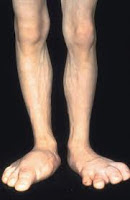Gigantism Nursing Diagnosis: Altered Family Processes

Gigantism is a condition of a person that excess growth, with great height and above normal. Gigantism is caused by excessive amounts of growth hormone. There are no high definition refer as "giants." adult height. Gigantism is a condition of a person that excess growth, with a large height above normal and is caused by the secretion of growth hormone (GH) excessive and occurs before adulthood or before epiphyseal closure process. (Corwin, 2007) Growth hormone is a hormone produced by the anterior pituitary which works to increase the growth and metabolism in target cells. Hormone target cells are located in almost all parts of the body. Growth hormone also plays a role in synthesizing somatomedin the liver, to stimulate the epiphyseal growth plate. Metabolic impact of GH is the mobilization of free fatty acids in adipose tissue and muscle glucose metabolism barriers and in adipose tissue. Pituitary gigantism often occurs as a result of excessive GH secretion due to the onset...